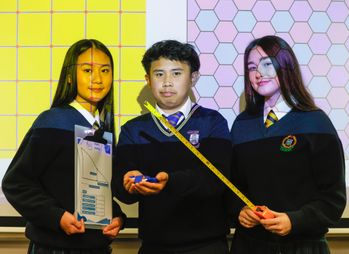
Breaking the Pattern: Why Aperiodic Tilings Matter
Tessellations—regular arrangements of shapes that fill a surface without gaps—have graced mosaics, architecture and even art for millennia. Yet until recent decades mathematicians discovered that not all tilings repeat. Aperiodic tilings generate patterns that never translate into themselves, while completely covering a plane. These structures shattered traditional assumptions about order and randomness and opened new avenues in materials science, chemistry and computer science.
The Math Meets Material Science Connection
When a pattern is applied at the microscopic level, it can decide how a material behaves. For instance, quasicrystals—structures that display aperiodic order—exhibit remarkable strength while remaining lightweight. Because they deviate from conventional symmetry, they also display unique electrical and thermal properties. This explains why Penrose tilings, discovered by Roger Penrose in the 1970s, eventually earned a Nobel Prize in Chemistry in 2011.
Trinity College Dublin’s Experimental Mathematics Lab has been at the forefront of translating these abstract theories into tangible demonstrations. The lab’s collaborative ethos brings together undergraduate researchers, faculty and external partners to build physical models that illustrate complex mathematical concepts in a hands‑on setting.
The EIN STEIN Workshop: A Hands‑On Exploration
In October 2025, an engaging field trip took place in collaboration with Trinity Access Programs (TAP). Eighteen Year‑Twelve students from Coláiste Bríde and Marian College visited the campus, bringing their curiosity and basic geometry tools. The event, named after the German term for “one stone” (ein stein), aimed to introduce the students to the enthralling world of aperiodic tilings, specifically the recently discovered “Hat” shape.
Morning Session: Understanding the Foundations
The workshop opened with an interactive lecture on the evolution of tiling theory. Starting from classic tessellations like regular hexagons, the instructor described the early challenges that led to the Tower of Hanoi and eventually to the search for simpler aperiodic tiles. By the end of the session, students had identified the two most famous aperiodic tiles: Penrose’s two‑piece set and the single‑piece Hat discovered by hobbyist David Smith in 2022.
Lunch and Hands‑On Construction
During the break, small groups received sets of physical tiles—wooden and plastic replicas of the Hat shape and Penrose rhombs. Under guidance, they attempted to assemble a tiling that covered a table without gaps or overlaps. The challenge was to deduce the matching rules that prevent repetition—a hands‑on echo of the mathematicians’ original problem statement.
Afternoon: Applying Geometry to Campus Architecture
Later, the participants moved to the front square near the iconic Campanile (bell tower). Each student used basic tools—a tape measure, a calculator and a ruler—to estimate the tower’s height. They then drew a scaled diagram of the tower using the methods they had just practiced with the tiles. By doing so, the students visualized how geometry and tessellation principles bear on real‑world structures—insightfully bridging theoretical math and architectural design.
Key Takeaways for Educators and Students
- Conceptual Clarity: Even students with limited math background can grasp the beauty of aperiodic patterns when they can physically manipulate building blocks.
- Interdisciplinary Insight: Tessellations provide a concrete link between pure mathematics, aesthetics, and cutting‑edge material science.
- Engagement & Inspiration: The workshop’s success underscores the power of experiential learning to spark interest in STEM careers.
Dr. Marvin Hahn, Assistant Professor in the School of Mathematics, emphasized that the session proved a potent example of how “mathematics shapes our daily lives” beyond abstract formulas. “By providing an organic, hands‑on experience, we help demystify the subject,” he observed.
Future Steps: Expanding the Scope
The experimental mathematics initiative plans to roll out similar workshops across all Trinity-affiliated schools. Planned improvements include:
- Broadening the range of tiles to include 3‑D analogues, such as the recently reported 3‑dimensional Aperiodic Compound.
- Incorporating software simulations that let students preview tiling patterns before constructing them physically.
- Creating an online repository of student-built models to serve as teaching resources.
Get Involved with Trinity College Dublin
If you’re a high‑school student aspiring to dive deeper into mathematics, Trinity College Dublin offers an array of undergraduate programs designed to build foundational knowledge before advancing into research arenas.
Prospective students may browse the current STEM courses tailored for curious minds eager to explore complex topics like topology, graph theory or computational geometry.
The Experimental Mathematics Lab welcomes volunteers and faculty‑student collaboration. Interested parties can learn more about lab projects and how to join or support ongoing research.
Encourage the Next Generation of Mathematicians
For teachers, incorporating manageable aperiodic tiling activities into middle or high school curricula can ignite students’ interest and provide them with practical tools to analyze patterns.
Parents and mentors should encourage young learners to explore how geometry impacts everything from modern materials to the natural world, by sharing resources like the MIT OpenCourseWare on tiling, or local math clubs that occasionally host jam‑sessions on quasicrystals.
Take the Next Step
As a summary, the EIN STEIN event demonstrated that the intersection of art, science, and education can create memorable learning moments. For anyone interested in pursuing academic or career pathways that touch on pattern‑based science, Trinity College Dublin offers a vibrant ecosystem for growth.
If you’re ready to explore mathematics beyond the textbook, consider applying to Trinity’s undergraduate program today. For immediate questions, feel free to contact the admissions office. Join the conversation and share your experience in the comments or on social media using the hashtag #TCDMathLab.

